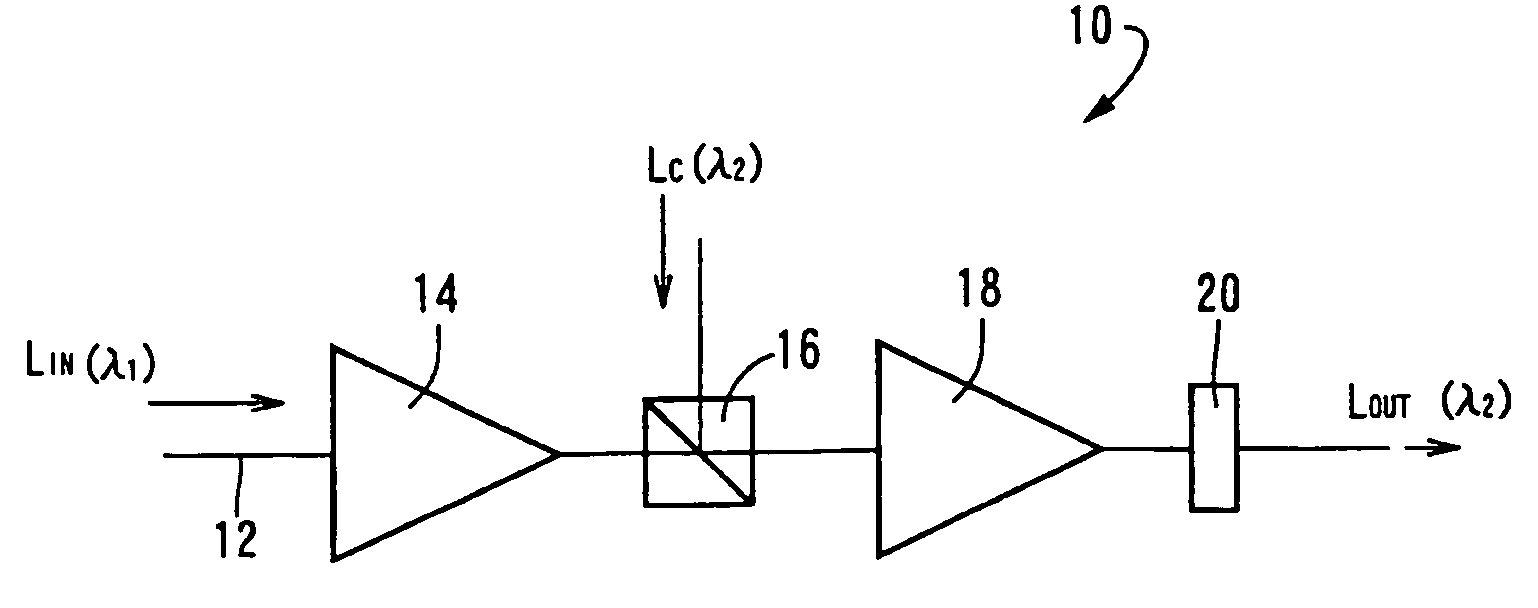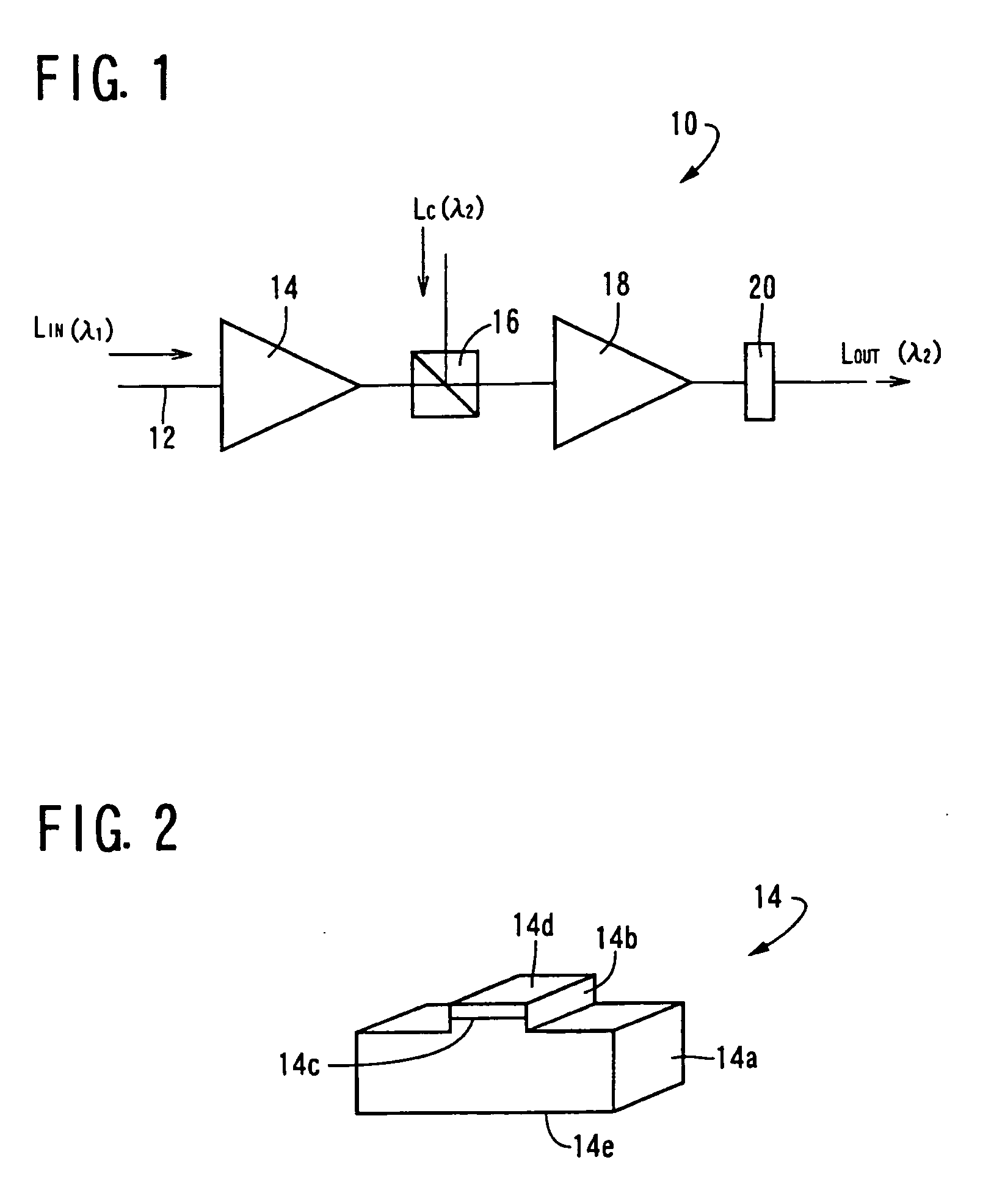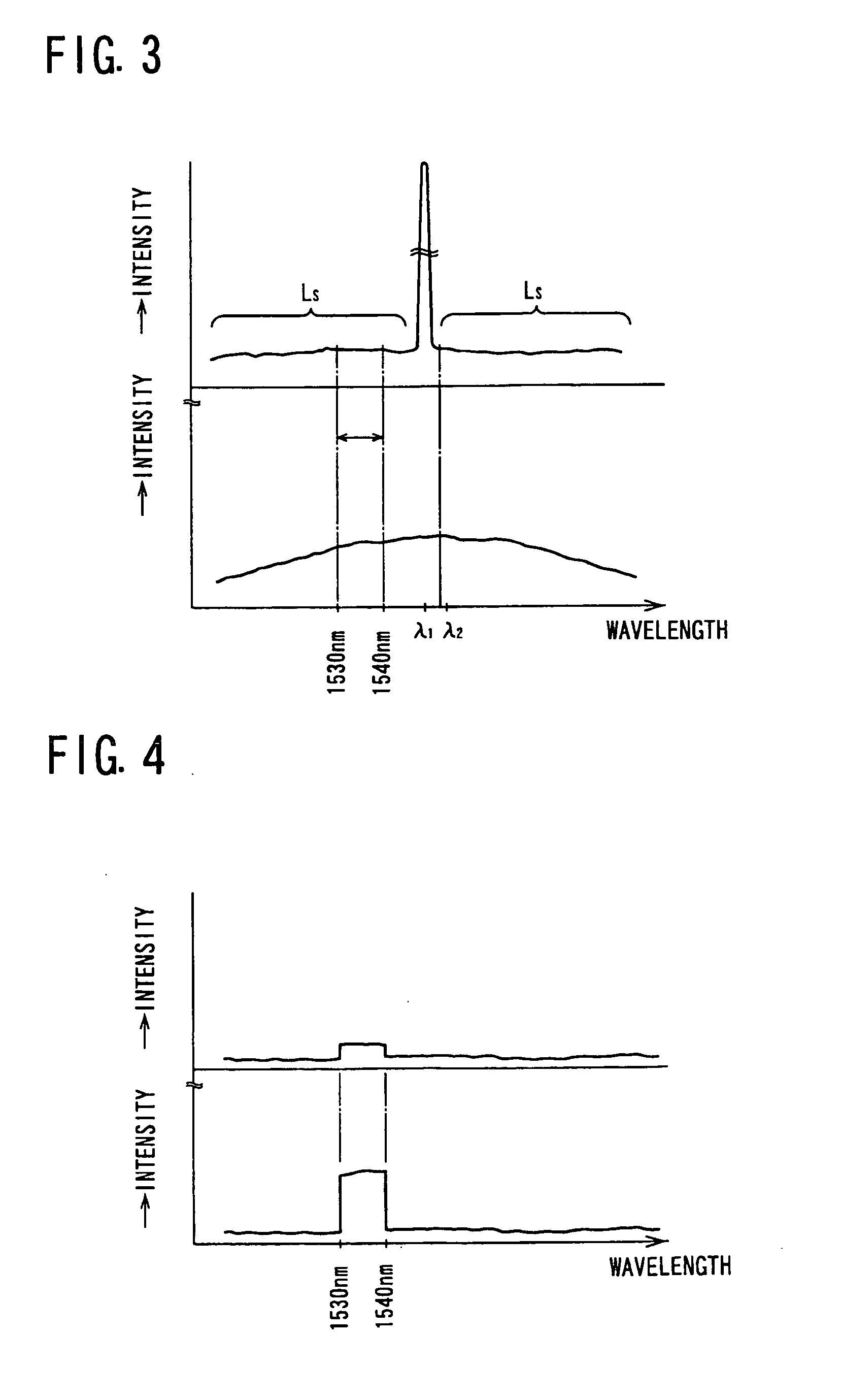Three-terminal optical signal amplifying device
a technology of optical signal and amplifier, which is applied in the direction of semiconductor amplifier structure, semiconductor laser, instruments, etc., can solve the problems of large change in characteristics, large change in optical signal amplification, and high cost and complexity of optical circuitry system, so as to achieve sufficient optical signal amplification, sufficient intensity, and sufficient gain
- Summary
- Abstract
- Description
- Claims
- Application Information
AI Technical Summary
Benefits of technology
Problems solved by technology
Method used
Image
Examples
Embodiment Construction
[0065]The semiconductor optical amplifying element is provided with the active layer constituted by the p-n junction to amplify the optical signal and is capable of generating the cross gain modulation. By the cross gain modulation an amplified laser light at the predetermined wavelength is output upon an input of a monochromatic laser light which is intensity-modulated, simultaneously, the neighboring light, that is, the spontaneous emission is output. The neighboring light has neighboring wavelengths around the wavelength of the input (or amplified) laser light, and the intensity of the neighboring light is increased or decreased in inverse proportion to the modulation of the input laser light in its intensity. Upon an input of a laser light having the predetermined intensity at the second wavelength which is within the range of the wavelengths of the spontaneous emission, the amplified laser light at the second wavelength is output which is modulated to be an inverse light with r...
PUM
 Login to View More
Login to View More Abstract
Description
Claims
Application Information
 Login to View More
Login to View More - R&D
- Intellectual Property
- Life Sciences
- Materials
- Tech Scout
- Unparalleled Data Quality
- Higher Quality Content
- 60% Fewer Hallucinations
Browse by: Latest US Patents, China's latest patents, Technical Efficacy Thesaurus, Application Domain, Technology Topic, Popular Technical Reports.
© 2025 PatSnap. All rights reserved.Legal|Privacy policy|Modern Slavery Act Transparency Statement|Sitemap|About US| Contact US: help@patsnap.com



